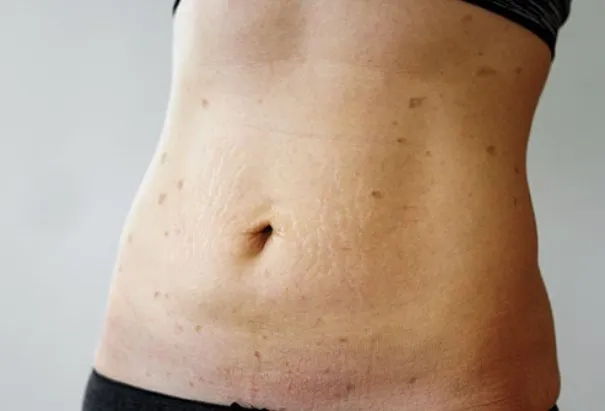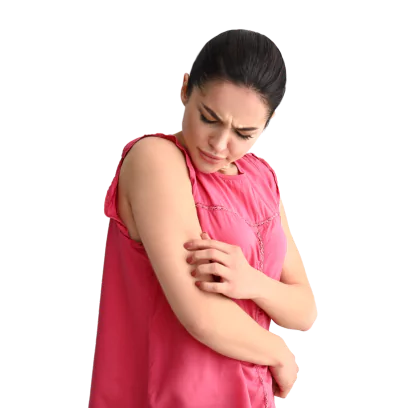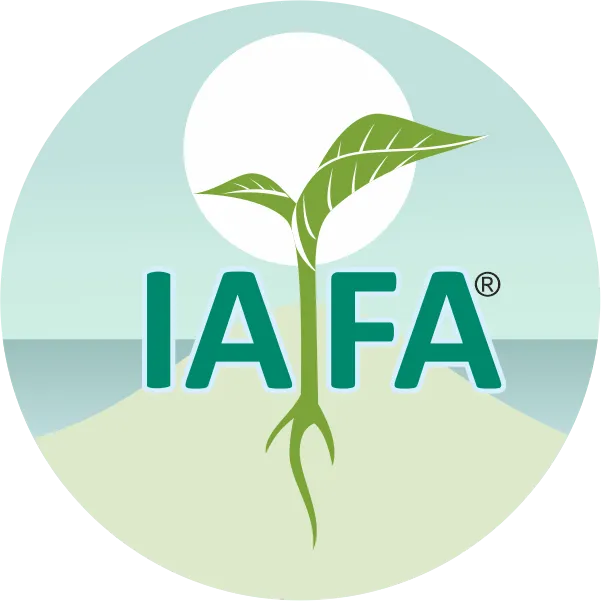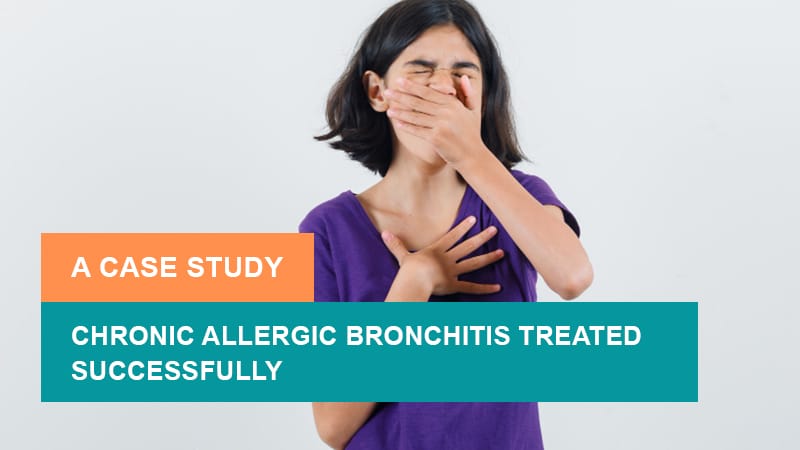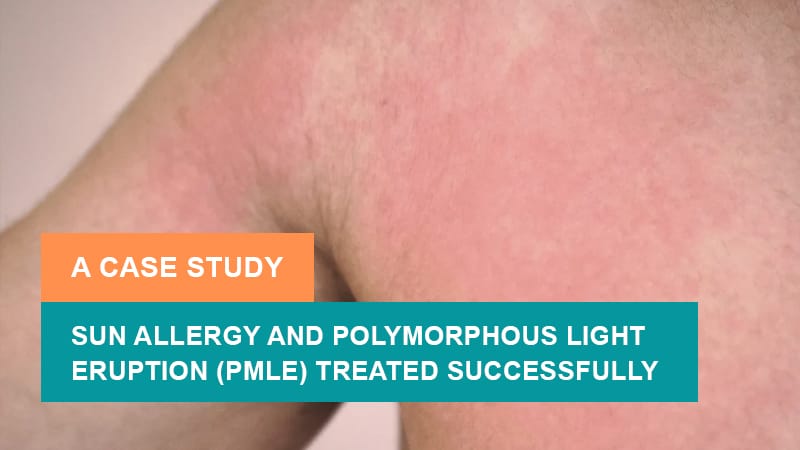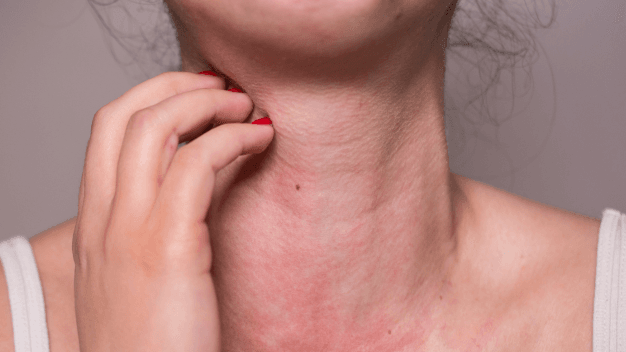On This Page
Introduction
The chronic immune-mediated and inflammatory disease that affects the skin, mucous membranes, hair, nails, etc. is known as Lichen planus. Erasmus Wilson was the first to describe lichen planus in 1869. It is a high psychosocial burden disease of elderly and middle-aged persons ranging from 30 to 70 years predominantly. Lichen planus is the T- cell-mediated autoimmune disease, with benign, pruritic, papulo-squamous, inflammatory dermatosis of unknown etiology.
In Ayurvedic classics based on symptoms, Lichen planus is correlated with the minor skin disorder Kitibha. Kitibha occurs mainly due to the Vata-Kapha dosha, blood vitiation, tissue depletion, etc. Here, you will find the causes, symptoms, diagnosis, and Ayurvedic treatment for Lichen planus like Panchakarma Procedures (internal purification of the body), Yoga procedures, Single Herbs, Diet and Lifestyle modification, etc. The treatment helps in balancing the vitiated Vata, Kapha, which will certainly help to treat Lichen planus deep from the roots.
What is the Lichen Planus?
The term Lichen planus describes the surface of the cutaneous lesion as derived from the Greek word Leichen which means tree moss and planus which means flat. The diseases affecting the stratified squamous epithelia are a group of chronic inflammatory diseases known as lichen planus. It can affect mucous membranes, skin, genitalia, nails, and hairs, and along with this purplish, flat-topped, and itchy papule are seen in LP diseases which often appear on the ankle, oral mucosa, wrist, etc. Lichen planus is an auto-immune disorder therefore mainly occurs when the body’s immune system mistakenly attacks mucosal cells and skin.
Lichen Planus – As Per Ayurveda
As per Ayurveda, Lichen planus is correlated with minor skin disorder (Kshudra Kustha) Kitibha which mainly involves Vata and Kapha Dosha, blood vitiation (Rakta Dushti), and tissue deletion (Dhatu Kshaya).
Who Gets Affected by Lichen Planus?
Lichen planus is an autoimmune disorder that affects people of all ages but as per the survey, it mainly affects the people of middle age that is between 30- 70 years. There are various types of Lichen planus and women tend to be more affected as compared to men, especially in oral lichen planus. Along with this people with high stress, immune system dysfunction, or genetic predisposition are more affected by Lichen Planus.
How Common is Lichen Planus?
As per a recent survey, worldwide the prevalence of cutaneous lichen planus is approximately 0.2% to 1% among adults while oral lichen planus is more common and reported in 1% to 4% of the population. As compared to men, women are more frequently affected at a ratio of 1.5:1, and most cases develop between the ages of 30 and 60. The condition of Lichen planus is rare in children, representing less than 5% of all affected patients. The highest prevalence of oral Lichen planus was reported in Europe (1.43 %) and the lowest in India (0.49 %).
Types of Lichen Planus
There are various types of lichen planus, and the prevalence of lichen planus varies depending on the type of lichen planus. The types of lichen planus are as follows:
- Cutaneous Lichen Planus: The Lichen planus is itchy, and has purple papules on the skin.
- Oral Lichen Planus: The lichen planus that affects the inner cheeks, tongue, and gums.
- Nail Lichen Planus: The lichen planus causes splitting, loss of nails, or thinning of nails.
- Hypertrophic Lichen Planus: The lichen planus is often seen on the legs which are thickened and have warty lesions.
- Bullous Lichen Planus: The lichen planus in which fluid-filled blisters develop on the lesions.
- Lichen Planopilaris (Scalp lichen planus): The lichen planus that results in scalp scarring and hair loss.
- Actinic Lichen Planus: The lichen planus in which areas like the face and hands are affected are exposed to the sun.
- Erosive Lichen Planus: The lichen planus that usually develops in the mouth and genitals and in which painful ulcerative lesions develop.
Causes of Lichen Planus (Modern Perspective)
- Dysregulation of the immune system
- Certain viral infections have been linked with lichen planus e.g. Hepatitis C virus is linked to oral lichen planus
- Psychological stress
- Various allergic reactions like reactions to dyes, chemicals, dental fillings, etc.
- Certain medications can induce lichen planus like ACE inhibitors, NSAIDs, beta-blockers, etc.
- Family history
Causes of Lichen Planus – As Per Ayurveda
- External factors like parasites or microbial infection (Krimi), etc.
- Intake of excessive sweet and salty food (Ati-Madhura and Ati-Lavana Ahara)
- Eating before previous food is digested (Ajeerna Bhojana)
- Intake of heavy and oily food (Guru and Snigdha Ahara)
- Incompatible food combination (Virrudha Ahara)
- Intake of excessive astringent and bitter food (Kashaya and Tikta Ahara) which due to Vata Vitiation increases dryness.
- Daytime sleeping (Diwa Swapana) leads to metabolic imbalances and vitiation of Kapha.
- Excessive exertion (Ati-Vyayama)
- Accumulation of toxins which led to the vitality of blood (Rakta Dushti)
Symptoms of Lichen Planus
- The hallmark symptoms of the lichen planus are skin lesions i.e. papules that are purple, pruritic, flat-topped, and polygonal.
- Wickham’s striae, i.e. white lacy patches more commonly seen in oral type of lichen planus.
- Nails thinning
- Ridging of nails
- Permanent hair loss in severe cases
- In erosive lichen planus, painful erosions are seen in the genitals or mouth.
- Itchy rashes are seen on the ankle, lower back, wrist
Symptoms of Lichen Planus – As Per Ayurveda
- Dark discoloration (Shyav Varna) i.e. lesions of dark color or bluish–black color is seen.
- The lesions are indurated and thick (Kathina)
- Skin feels rough and coarse (Khara Sparsha)
- Dryness and scaly appearance (Parush)
- Itching (Kandu)
- Oral ulcers (Mukha Paka)
Diagnosis of Lichen Planus – As Per Ayurveda
Diagnosis of lichen planus is made by visual examination (Darshana Pariksha) i.e. by identifying characteristic lesions, touch examination (Sparshana Pariksha) by which sensitivity, thickness, and texture of skin are assessed, along with these various questions will be asked to the patient related to their dietary habits, mental health, lifestyle, etc. Body constitution analysis (Prakriti Pariksha) of the patient is also done so that personalized treatment can be given.

“Dr. Gupta’s IAFA successfully addresses this condition and provides very safe and effective treatment for Lichen planus. Institute of Applied Food Allergy® aspires to be the destination of choice for people seeking authentic Ayurveda healthcare. IAFA cares about all your concerns related to health.”
Uncompromising Excellence. Commitment to Care…!!! Dr. Gupta’s IAFA for your future health.
– Dr. Sahil Gupta (B.A.M.S., M.H.A.)
Ayurvedic Allergy Specialist
CEO & Founder of IAFA®
At last, Easier Lichen Planus Management

Trusted by
More than 90,000 Patients

Convenient
at-Home Treatments
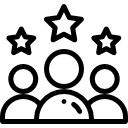
9.2 / 10
Customer Satisfaction Score
Lichen Planus Ayurvedic Treatment
The Lichen Planus Ayurvedic treatment mainly focuses on balancing the Dosha mainly Kapha, Vata and also restoring the balance of skin (Twaka), blood (Rakta Dhatu), through Shodhana (purificatory), Shamana (palliative), dietary regulation (Pathya-Apathya), lifestyle modification, etc. Lichen planus is a chronic disorder that is time-consuming and requires treatment for a longer period.
We at IAFA Ayurveda provide effective purificatory and palliative therapies for lichen planus treatment in Ayurveda. Dr. Gupta’s IAFA is the perfect destination for Ayurvedic treatment of Lichen Planus as well as other types of skin disorders. The Ayurvedic approach that is used to treat Lichen planus is as follows:-
Detoxification Therapy (Shodhana Therapy) for Lichen Planus
- Emetic Therapy (Vamana) – For expelling excessive Kapha and toxins from patients Vamana is specially indicated when lesions are sticky, itchy, and thick.
- Purgation Therapy (Virechana) – Therapeutic purgation is also done in lichen planus patients when lesions are red, associated with a burning sensation, inflamed, etc. Purgative therapy along with this helps to detoxify the blood by eliminating deep-seated toxins.
- Bloodletting Therapy (Rakta Mokshana) – With the use of various techniques like leech therapy (Jaloka Avacharana) and venesection (Sira Vedha) the removal of impure blood is done from the body in bloodletting therapy. This is recommended in severe and chronic cases and when lesions are persistent, associated with chronic inflammation, dark pigmentation, etc.
- Medicated Enema Therapy (Basti) – In this process, medicated oil or decoctions are administered through the rectum which helps to balance deep-seated aggravation of Vata. It also helps in preventing relapses of lichen planus.
- Topical Applications (Lepana) – Various combinations of herbs are taken, their paste is formed and are applied over the affected area for external healing. The use of Lepa helps in depigmentation, skin regeneration, reducing irritation and itching.
Herbs for Lichen Planus
Herbs for Lichen Planus Ayurvedic treatment includes Manjistha (Rubia cordifolia), Haridra (Curcuma longa), Neem (Azadirachta indica), Guduchi (Tinospora cordifolia), Khadir (Acacia catechu), Bakuchi (Psoralea corylifolia), etc.
These herbs possess blood purifier, anti-inflammatory, immunosuppressive properties, etc. which enhance detoxification by inhibiting pro-inflammatory cytokines, reducing oxidative stress, enhancing skin regeneration, etc. Recent study revealed that curcumin present in turmeric is very effective in reducing symptoms of the lichen planus.
Gem Therapy for Lichen Planus
Few stones are recommended to wear in Lichen planus as per Vedic Astrology. These stones can be worn after proper consultation with an astrologer as per your birth date, Zodiac sign, etc. to get only benefits. As per astrology, Emerald (Panna), Yellow sapphire (Pukhraj), Red coral (Moonga), Moonstone – Upratna (Chandra Kant Mani), and Blue Sapphire (Neelam) can be worn as per your natal chart if you are suffering from Lichen planus. These stones help in balancing Vata, Pitta, and Kapha, calm the mind, reduce toxins, promote blood circulation, reduce inflammation, etc.
Diet and Lifestyle Guidance (Pathya-Apathya) for Lichen Planus
According to Ayurveda, if your diet is correct then medicine is of no use because a good gut is considered as the basis of a healthy individual. So, by giving attention to our daily diet, we not only get relief from the diseases from which we suffer but also avoid the upcoming diseases. Below we mention some dietary and lifestyle guidelines that one can follow for Lichen planus:-
What to Do (Pathya) in Lichen Planus?
- Take plenty of green leafy vegetables like fenugreek, spinach, drumstick leaves, etc.
- Intake of plenty of fruits like apple, guava, papaya, amla, etc.
- Light food that is easy to digest should be taken (Laghu Aahara) to balance Vata and Kapha.
- Bitter vegetables (Tikta Shaka) should be included in the diet
- To pacify aggravated Dosha old cereal and grains (Purana Dhanya), Moong dal should be taken into the diet
- Herbal teas made of licorice, Guduchi, and Triphala should be taken.
- Yoga, meditation, and exercise should be done regularly
- One should have dinner and sleep at the appropriate time (Ratricharya)
- Drink coconut water as it has cooling and detoxifying properties.
- Regular oil massage (Abhyanga).
What to Avoid (Apathya) in Lichen Planus?
- Avoid heavy and oily meals (Guru and Snigdha Ahara)
- Avoid incompatible food (Virrudha Aahara)
- Intake of salty (Lavana) food should be avoided
- Nightshade vegetables like eggplant, potatoes, tomatoes, etc. should be avoided.
- Processed food and junk food should be avoided.
- Anger and anxiety (Krodha and Shoka) should be avoided.
- Chemical-based skin care like perfumed soaps and harsh cosmetics should be avoided.
- Exposure to excessive heat (Aatapa) or frequent exposure to the sun should be avoided.
Yoga Asanas for Lichen Planus
Various Yoga Asanas like shoulder stand (Sarvangasana), Camel pose (Ustrasana), Cobra pose (Bhujangasana), Legs up the wall pose (Vipritakarani Asana), Deep breathing technique (Pranayama) specially Sheetali Pranayama, alternate nostril breathing (Anulom Viloma), meditation, etc. can be used in Lichen planus. These Yogic Asanas balance Vata and Kapha, stimulate blood circulation, reduce stress-related flare-ups, and enhance skin elasticity and blood flow to the body.
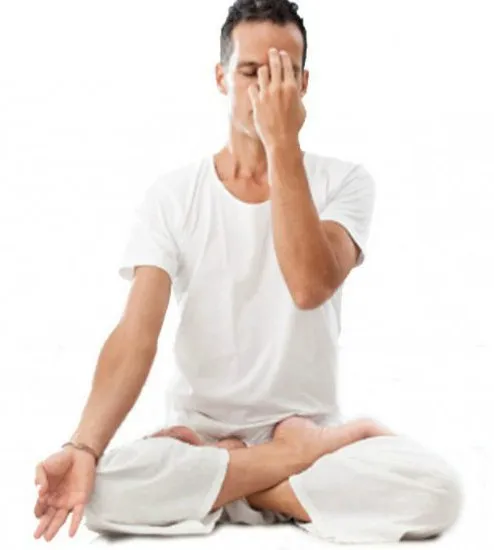
Frequently Asked Questions
Question: How to Stop Lichen Planus from Spreading?
Answer: By identifying and avoiding potential triggers, managing stress, following an anti-inflammatory diet, cooling agents, and herbal remedies one can stop the spreading of lichen planus.
Question: How Do You Get Rid of Lichen Planus Naturally?
Answer: By use of internal detoxification therapy, various herbal topical pastes, and oral formulations along with lifestyle modification can help to get rid of lichen planus naturally.
Question: How to Remove Lichen Planus Pigmentation?
Answer: By applying various natural skin lighteners as per the advice of the expert like sandalwood paste, nutmeg paste, aloe vera gel, etc., and use of various herbs like Manjistha, Haridra, Lodhra, etc., and by regular exfoliation the pigmentation of lichen planus can be improved.
Question: Is Lichen Planus Contagious?
Answer: No, lichen planus does not spread from person to person.
Question: Can Lichen Planus Be Cured Completely?
Answer: Some cases of lichen planus persist for years while some resolve on their own. If Ayurvedic treatment is taken as expert advice it helps to manage lichen planus effectively.
References
- S, Manasa & Mahesh, T & Rajashekhar, C. (2021). AYURVEDIC APPROACH ON LICHEN PLANUS WITH SPECIAL REFERENCE TO KITIBHA KUSHTHA: A CASE STUDY. International Journal of Research in Ayurveda and Pharmacy. 12. 33- 38. 10. 7897/ 2277- 4343. 1204102.
- PS Berbi, Sourabha S Kokatnur, Ayurvedic management of Kitibha Kushta – A Case Study. J Ayu Int Med Sci. 2022; 7 (1): 390- 398.
- Gonzalez-Moles MA, Warnakulasuriya S, Gonzalez-Ruiz I, Gonzalez-Ruiz L, Ayen A, Lenouvel D, Ruiz-Avila I, Ramos-Garcia P. Worldwide prevalence of oral lichen planus: A systematic review and meta-analysis. Oral Dis. 2021 May; 27 (4): 813- 828. doi: 10. 1111/ODI. 13323. Epub 2020 Apr 2. PMID: 3214- 4836.
- Nampalliwar, Amit & Biradar, Dr. (2021). AYURVEDIC MANAGEMENT OF LICHEN PLANUS: A CASE REPORT. International Ayurvedic Medical Journal. p5. 3043- 3049. 10. 46607/ iamjp- 145052021.
- Ratha KK, Barik L, Panda AK, Hazra J. A single case study of treating hypertrophic lichen planus with Ayurvedic medicine. Ayu. 2016 Jan- Mar; 37 (1): 56- 61. Doi: 10. 4103/ ayu. AYU_ 1_ 16. PMID: 2882- 7956; PMCID: PMC- 5541468.
- Arnold DL, Krishnamurthy K. Lichen Planus. In: Stat- Pearls. Treasure Island (FL): Stat- Pearls Publishing; 2025 Jan.
- Weston, G., & Payette, M. (2015). Update on lichen planus and its clinical variants. International Journal of Women’s Dermatology, 1 (3), 140-149.
Seek Expert Advice
Dr. Gupta’s IAFA is a pioneering center in the Ayurvedic management of various diseases including Lichen Planus. IAFA Ayurveda ensures good results and relief to all suffering from the distressing effects of Lichen Planus.
Visit IAFA and feel the true sense of health through Ayurveda!!! For personalized treatment of Lichen planus, book an appointment now!!!
Was this Page Helpful?
So, IAFA’s Root-Cause Treatment of Lichen Planus is Just 3 Steps Away!

01. Connect With Us
Share your history of illness or Book your appointment

02. Consult With Us
Dr. Gupta a certified Ayurvedic Allergist Consultant

03. Root Cause Treatment
Get an accurate diagnosis, medicines, diet & lifestyle change
Real Case Studies – Successfully Treated Patients
Real Case Studies of Successfully Treated Patients from All Around the World by IAFA Ayurveda®

9 Year Old Female Patient Recovered from Chronic Allergic Bronchitis – A Case Study
This case study presents a 9-year-old female patient who has successfully recovered…

12-Year-Old Child Recovered from Sun Allergy and Polymorphous Light Eruption (PMLE) – A Case Study
This is a case study of a 12-year-old child who has successfully…

40-Year-Old Female Patient Recovered from Dyshidrotic Eczema and Onychomycosis – A Case Study
This case study highlights the successful recovery of a 40-year-old female patient…

40-Year-Old Female Patient Recovered from Urticaria and Angioedema – A Case Study
This case study focuses on a 40-year-old female patient who has successfully…
Read More Articles

Mast Cell Diseases
Discover Ayurvedic treatment for Mast Cell Diseases, including types, causes, symptoms, and…

High Immunoglobulin-E (IgE) Levels
Discover Ayurvedic treatment for high Immunoglobulin-E (IgE) levels. Learn about the causes,…

Histamine Intolerance
Discover Ayurvedic treatment for histamine intolerance, its causes, symptoms, and natural treatment.…

